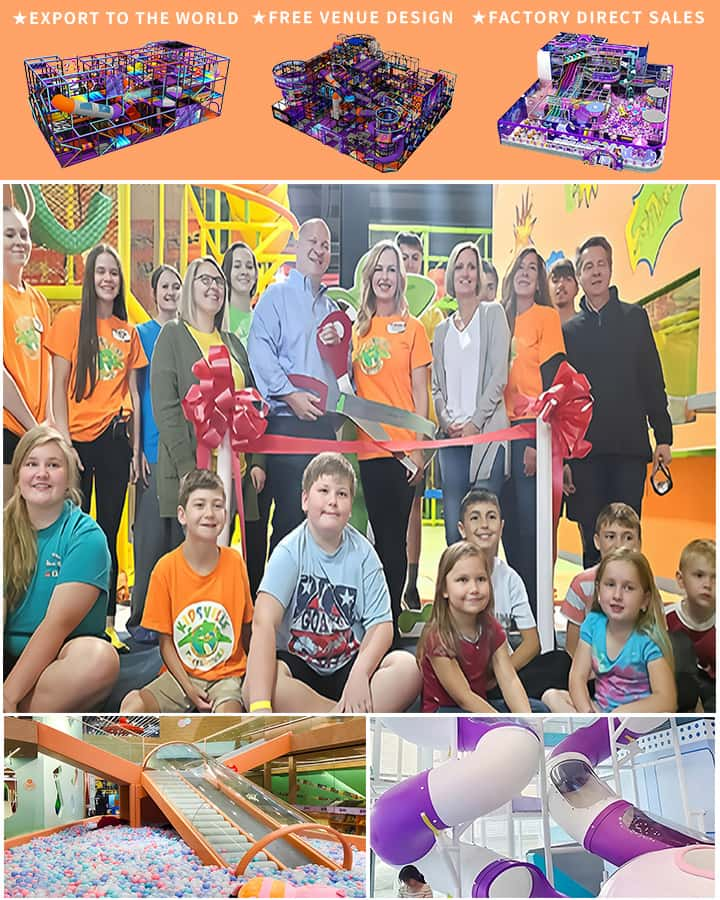Creating an indoor playground for kids can be a fun and rewarding project, providing endless opportunities for imaginative play and physical activity right at home. Whether you’re looking to set up a small play area in a living room or dedicate a whole room to the cause, this guide will help you create an engaging, safe, and creative space for your little ones.
Why Create an Indoor Playground?
An indoor playground offers numerous benefits for children. It serves as a dedicated space where kids can expend energy, foster creativity, and improve motor skills, all while staying safe from the elements. Plus, having a designated play area can help keep toys organized and reduce clutter in other parts of your home.
Essential Components of an Indoor Playground
To set up an effective indoor playground, you need a mix of structures and accessories that cater to various types of play: climbing, sliding, jumping, and imaginative activities. Here are some must-have components:
1. Climbing Walls and Forts
Climbing walls or play forts provide excellent opportunities for physical exercise and developing coordination. Look for wall-mounted options to save floor space or free-standing forts that can add a whimsical touch to the room.
2. Slides
A slide is a classic element of any playground. Choose one that fits your available space—whether it’s a small, spiral slide for compact areas or a larger one for more open spaces. Ensure that the landing area at the bottom is well-padded for safety.
3. Trampoline
Mini trampolines can be a great addition, offering kids a fun way to bounce off some energy. Make sure to place it on a non-slip surface and supervise young children during use.

4. Ball Pool
A ball pit adds an element of sensory play and is perfect for younger kids. Use soft plastic balls to fill a shallow pool or designated area, ensuring that they’re big enough to avoid choking hazards.
5. Interactive Toys and Games
Incorporate interactive toys like building blocks, puzzles, or educational games to enhance cognitive development. These can be stored in bins or on shelves within the play area.
6. Comfort Corners
Don’t forget to include cozy spots where kids can relax after active play. A small reading nook with pillows, blankets, and age-appropriate books can be a delightful retreat.
Safety First: Precautions and Tips
Safety is paramount when setting up an indoor playground. Here are some essential precautions:
1. Secure Furniture
Anchor heavy pieces of equipment to the wall to prevent tipping. This is especially important for climbing structures.
2. Padding and Flooring
Use foam mats or rubber flooring to cushion falls. Cover sharp edges with padding to minimize injury risks.
3. Supervision
Always supervise young children during playtime to ensure their safety. Keep the play area clear of small objects that could pose choking hazards.
4. Age-Appropriate Equipment
Match the playground equipment to your child’s age group. Some items may be too challenging or unsafe for younger kids.
Creative Ideas and DIY Solutions
If space or budget is a constraint, consider DIY solutions to create a unique indoor playground:
1. Homemade Climbing Wall
Construct a simple climbing wall using plywood panels and attach ropes, fabric holds, or wooden pegs for grips.
2. Cardboard Playhouses
Repurpose large cardboard boxes to create mini playhouses or castles. Decorate them with paint, markers, and stickers to spark imagination.
3. Obstacle Course
Set up an obstacle course using household items like cushions, chairs, and hula hoops. Challenge your kids to navigate through it without touching the “lava” (designated boundaries).
Conclusion
Setting up an indoor playground for kids can transform any space into an exciting realm of adventure and learning. By incorporating a mix of physical structures, interactive toys, and safety measures, you’ll create an environment where your children can thrive both physically and mentally. So roll up your sleeves, gather your supplies, and get ready to bring joy and excitement to your home!




